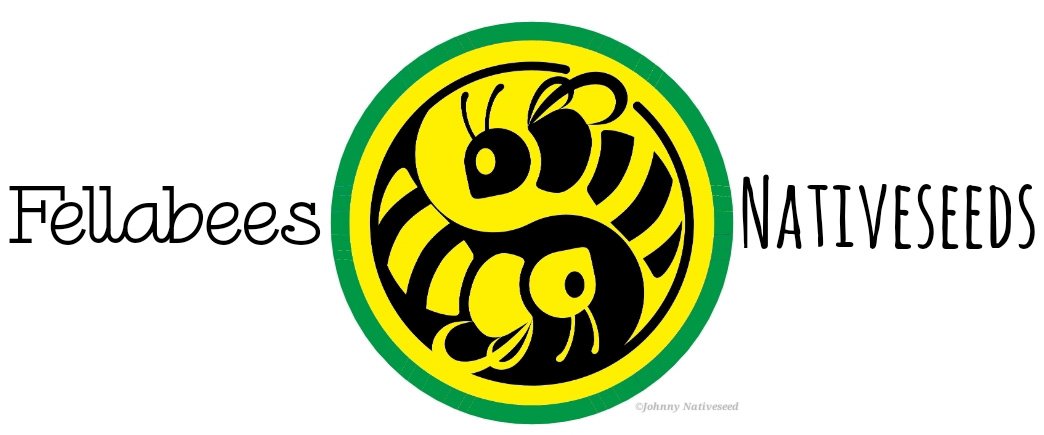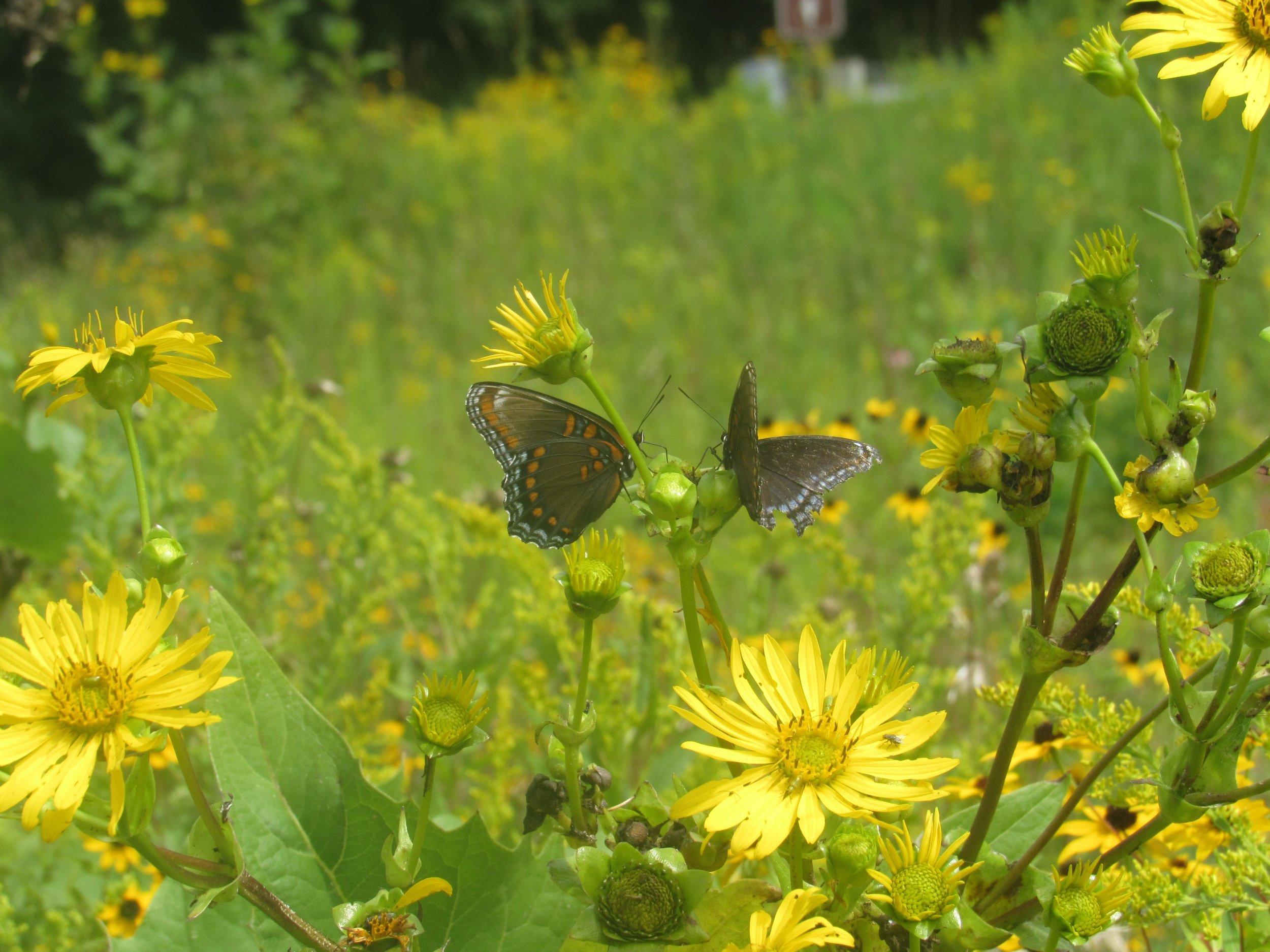 Image 1 of 7
Image 1 of 7

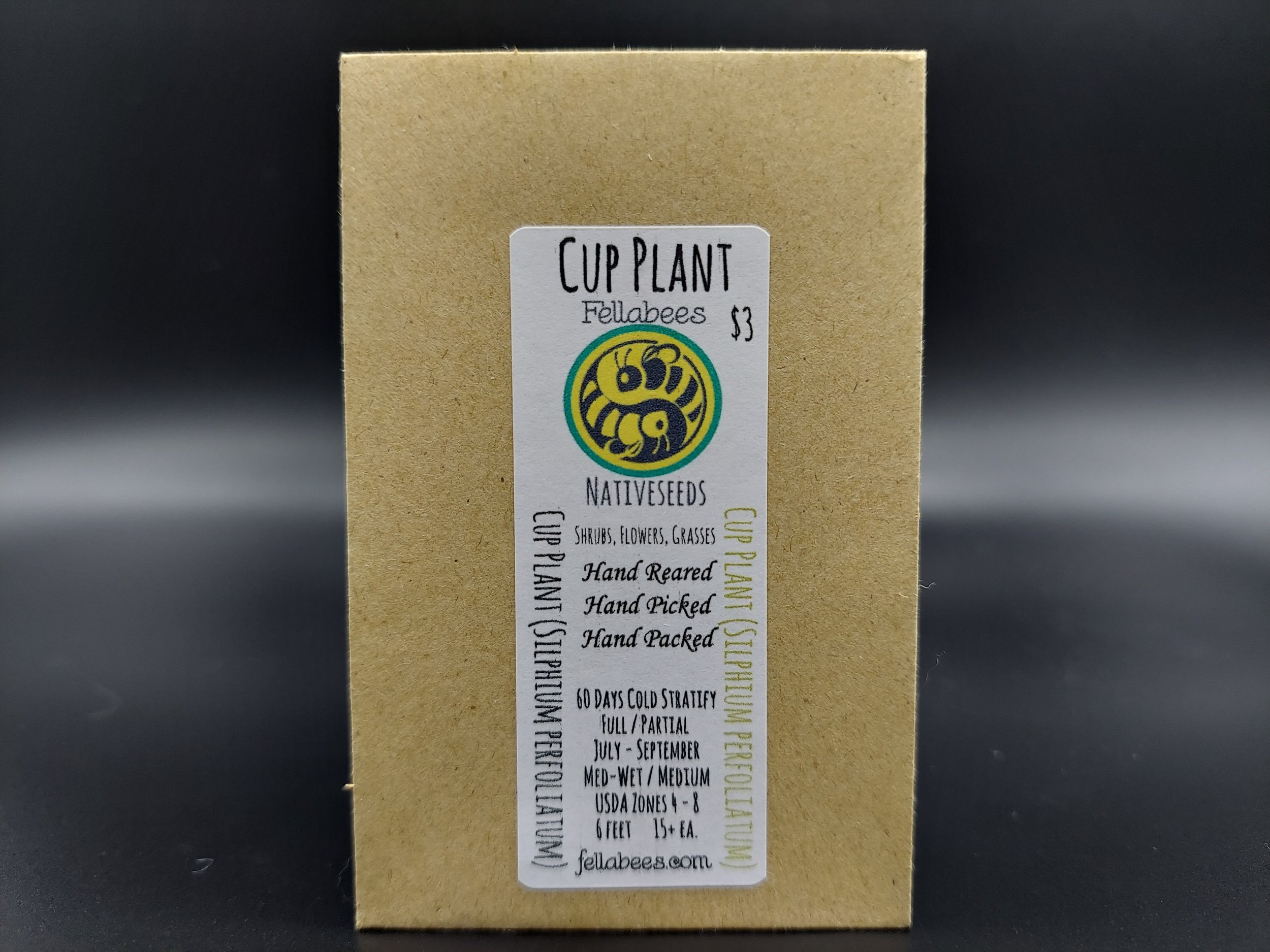 Image 2 of 7
Image 2 of 7

 Image 3 of 7
Image 3 of 7

 Image 4 of 7
Image 4 of 7

 Image 5 of 7
Image 5 of 7

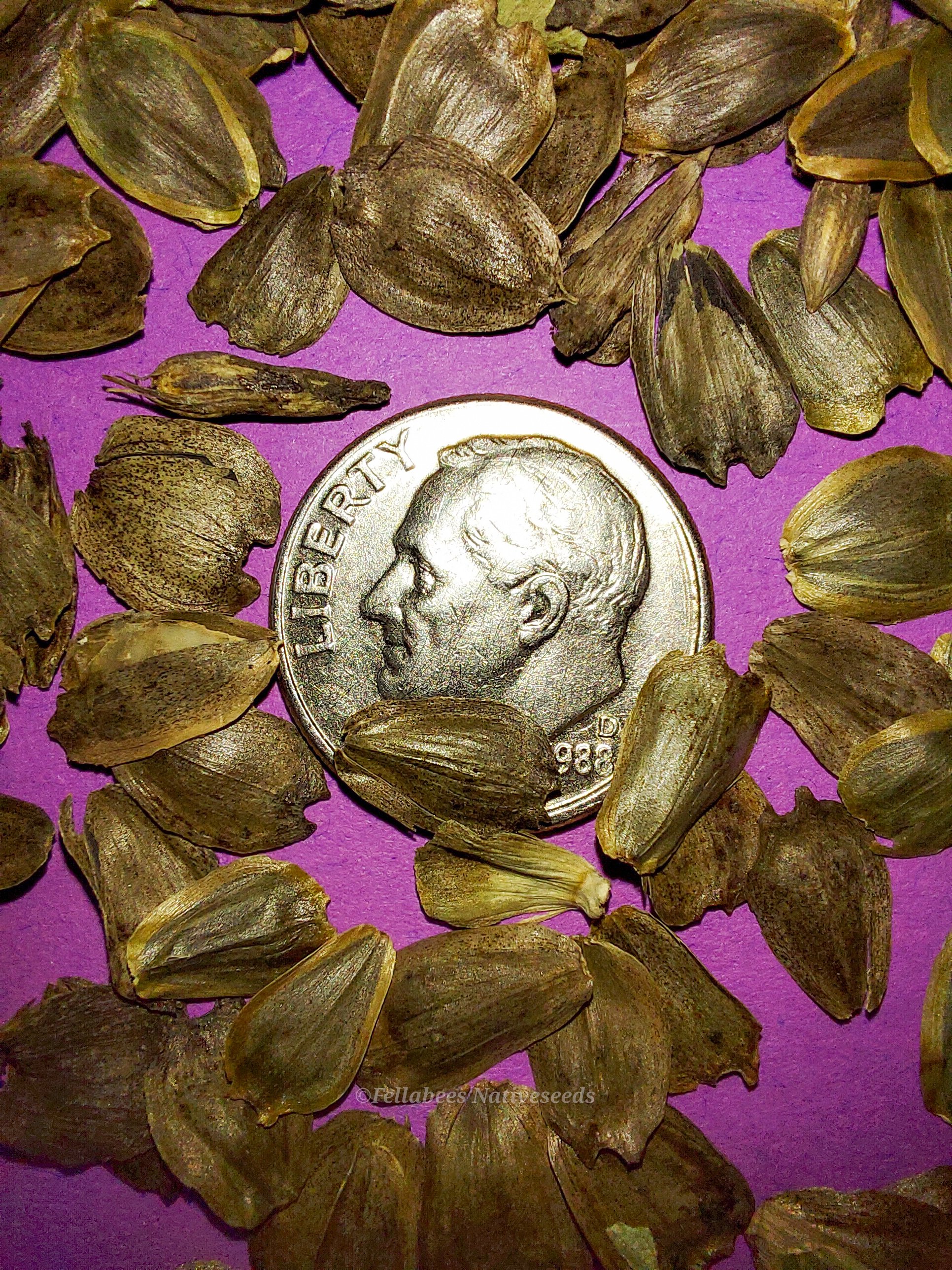 Image 6 of 7
Image 6 of 7

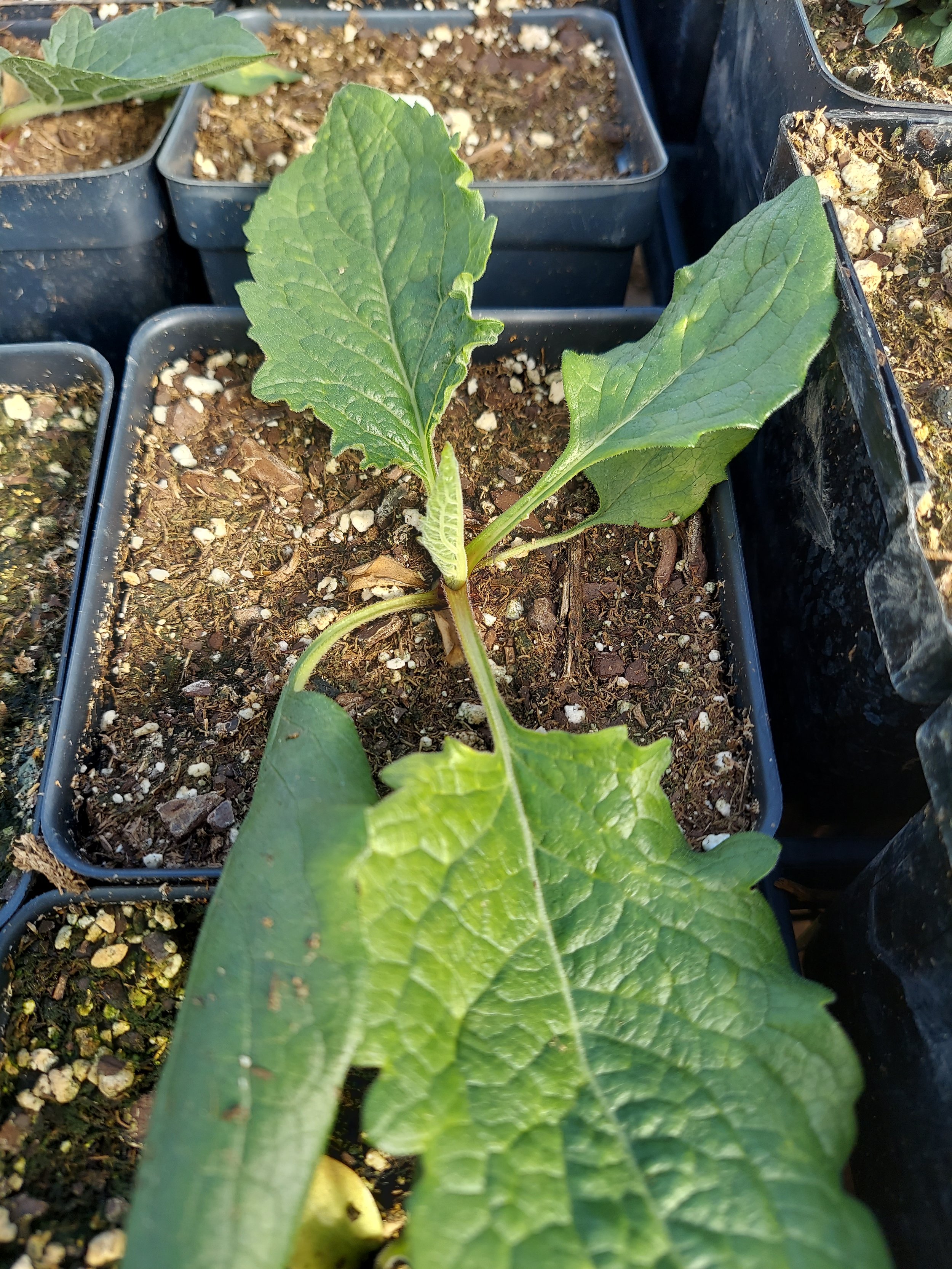 Image 7 of 7
Image 7 of 7

Cup Plant (Silphium perfoliatum)
Cup Plant (Silphium perfoliatum)
Silphium perfoliatum, most commonly called Cup Plant, is a species of flowering plant hailing from the vast and diverse Asteraceae family. This striking native plant is endemic to Eastern and Central North America. It is an erect herbaceous perennial with triangular toothed leaves, with a daisy-like yellow composite flower heads in summer.
The typical height of Cup Plant plant ranges from 3–8 ft. The stem is stout, smooth, slightly hairy, with strongly squared stem much like mint plants. The leaves are opposite, toothed and ovate. The petioles are widely winged and fused around the stem, forming a cup. The first flower will develop on the tip of the main stem, then more flowers develop on side branches.
Many pollinators including hummingbirds, bees, butterflies, and skippers help to cross-fertilize their flowers in order to produce their seeds. 20 to 30 seeds are created in each flower head. Each seed is about 9 to 15 mm long and about 6–9 mm wide, is flattened in shape, with a thickness of about 1 mm.
Cup Plant is easily able to establish colonies due to its central taproot system and shallow rhizomes. The roots found in botanical gardens have been estimated to be more than 50 years old! Because Cup Plants have an extensive root system, they do not transplant well except when very young. So it is wise to plant them where you plan to keep them permanently.
This plants metabolic pathway is found in its C3 carbon fixation. It is highly adapted to endure extreme weather and inhospitable conditions. Meaning that during the winter, it’s roots remain dormant and can survive temperatures as low as −22 °F. Its optimal growing temperature is 68 °F
Plant Details
USDA Zones: 4-8
Germination Needs: 60 Day Cold Stratification
Life Cycle: Perennial
Sun Exposure: Full to Partial
Soil Moisture: Medium-Wet, Medium
Plant Spacing: 2-4 feet
Height: 6 feet
Bloom Time: July, August, September
Bloom Color: Yellow
Advantages
Pollinator Favorite: butterflies, moths, bees, wasps, beetles
Bird Favorite: seeds, insects, fruit, nectar, nesting, perchs.
Deer Resistant: Yes
.
.
Packet quantities:
We pride ourselves on ethical, hands on, ecological management, using no mechanical or chemical methods whatsoever.
All of our native seed is hand reared, hand0 picked, and hand packed from native prairies under our exclusive management, never breaking chain of custody from the field until it is sent to you. Each packet is hand prepared for shipment by us, directly.
Small seed species will contain greater than 20-25 seed
Large seed species will contain greater than 10-15 seed
It is our mission to spread the wealth of native plant and pollinator ecological sustainability, and educate back yard gardeners as well as corporate and government entities in how to germinate, grow, and benefit from native synergies.
Thank you for your support, it is because of you, that we can grow together to do, what we do.🐛🦋🐝🐞🌾🌱🌼
Cup Plant (Silphium perfoliatum)
Silphium perfoliatum, most commonly called Cup Plant, is a species of flowering plant hailing from the vast and diverse Asteraceae family. This striking native plant is endemic to Eastern and Central North America. It is an erect herbaceous perennial with triangular toothed leaves, with a daisy-like yellow composite flower heads in summer.
The typical height of Cup Plant plant ranges from 3–8 ft. The stem is stout, smooth, slightly hairy, with strongly squared stem much like mint plants. The leaves are opposite, toothed and ovate. The petioles are widely winged and fused around the stem, forming a cup. The first flower will develop on the tip of the main stem, then more flowers develop on side branches.
Many pollinators including hummingbirds, bees, butterflies, and skippers help to cross-fertilize their flowers in order to produce their seeds. 20 to 30 seeds are created in each flower head. Each seed is about 9 to 15 mm long and about 6–9 mm wide, is flattened in shape, with a thickness of about 1 mm.
Cup Plant is easily able to establish colonies due to its central taproot system and shallow rhizomes. The roots found in botanical gardens have been estimated to be more than 50 years old! Because Cup Plants have an extensive root system, they do not transplant well except when very young. So it is wise to plant them where you plan to keep them permanently.
This plants metabolic pathway is found in its C3 carbon fixation. It is highly adapted to endure extreme weather and inhospitable conditions. Meaning that during the winter, it’s roots remain dormant and can survive temperatures as low as −22 °F. Its optimal growing temperature is 68 °F
Plant Details
USDA Zones: 4-8
Germination Needs: 60 Day Cold Stratification
Life Cycle: Perennial
Sun Exposure: Full to Partial
Soil Moisture: Medium-Wet, Medium
Plant Spacing: 2-4 feet
Height: 6 feet
Bloom Time: July, August, September
Bloom Color: Yellow
Advantages
Pollinator Favorite: butterflies, moths, bees, wasps, beetles
Bird Favorite: seeds, insects, fruit, nectar, nesting, perchs.
Deer Resistant: Yes
.
.
Packet quantities:
We pride ourselves on ethical, hands on, ecological management, using no mechanical or chemical methods whatsoever.
All of our native seed is hand reared, hand0 picked, and hand packed from native prairies under our exclusive management, never breaking chain of custody from the field until it is sent to you. Each packet is hand prepared for shipment by us, directly.
Small seed species will contain greater than 20-25 seed
Large seed species will contain greater than 10-15 seed
It is our mission to spread the wealth of native plant and pollinator ecological sustainability, and educate back yard gardeners as well as corporate and government entities in how to germinate, grow, and benefit from native synergies.
Thank you for your support, it is because of you, that we can grow together to do, what we do.🐛🦋🐝🐞🌾🌱🌼
Cup Plant (Silphium perfoliatum)
Silphium perfoliatum, most commonly called Cup Plant, is a species of flowering plant hailing from the vast and diverse Asteraceae family. This striking native plant is endemic to Eastern and Central North America. It is an erect herbaceous perennial with triangular toothed leaves, with a daisy-like yellow composite flower heads in summer.
The typical height of Cup Plant plant ranges from 3–8 ft. The stem is stout, smooth, slightly hairy, with strongly squared stem much like mint plants. The leaves are opposite, toothed and ovate. The petioles are widely winged and fused around the stem, forming a cup. The first flower will develop on the tip of the main stem, then more flowers develop on side branches.
Many pollinators including hummingbirds, bees, butterflies, and skippers help to cross-fertilize their flowers in order to produce their seeds. 20 to 30 seeds are created in each flower head. Each seed is about 9 to 15 mm long and about 6–9 mm wide, is flattened in shape, with a thickness of about 1 mm.
Cup Plant is easily able to establish colonies due to its central taproot system and shallow rhizomes. The roots found in botanical gardens have been estimated to be more than 50 years old! Because Cup Plants have an extensive root system, they do not transplant well except when very young. So it is wise to plant them where you plan to keep them permanently.
This plants metabolic pathway is found in its C3 carbon fixation. It is highly adapted to endure extreme weather and inhospitable conditions. Meaning that during the winter, it’s roots remain dormant and can survive temperatures as low as −22 °F. Its optimal growing temperature is 68 °F
Plant Details
USDA Zones: 4-8
Germination Needs: 60 Day Cold Stratification
Life Cycle: Perennial
Sun Exposure: Full to Partial
Soil Moisture: Medium-Wet, Medium
Plant Spacing: 2-4 feet
Height: 6 feet
Bloom Time: July, August, September
Bloom Color: Yellow
Advantages
Pollinator Favorite: butterflies, moths, bees, wasps, beetles
Bird Favorite: seeds, insects, fruit, nectar, nesting, perchs.
Deer Resistant: Yes
.
.
Packet quantities:
We pride ourselves on ethical, hands on, ecological management, using no mechanical or chemical methods whatsoever.
All of our native seed is hand reared, hand0 picked, and hand packed from native prairies under our exclusive management, never breaking chain of custody from the field until it is sent to you. Each packet is hand prepared for shipment by us, directly.
Small seed species will contain greater than 20-25 seed
Large seed species will contain greater than 10-15 seed
It is our mission to spread the wealth of native plant and pollinator ecological sustainability, and educate back yard gardeners as well as corporate and government entities in how to germinate, grow, and benefit from native synergies.
Thank you for your support, it is because of you, that we can grow together to do, what we do.🐛🦋🐝🐞🌾🌱🌼
